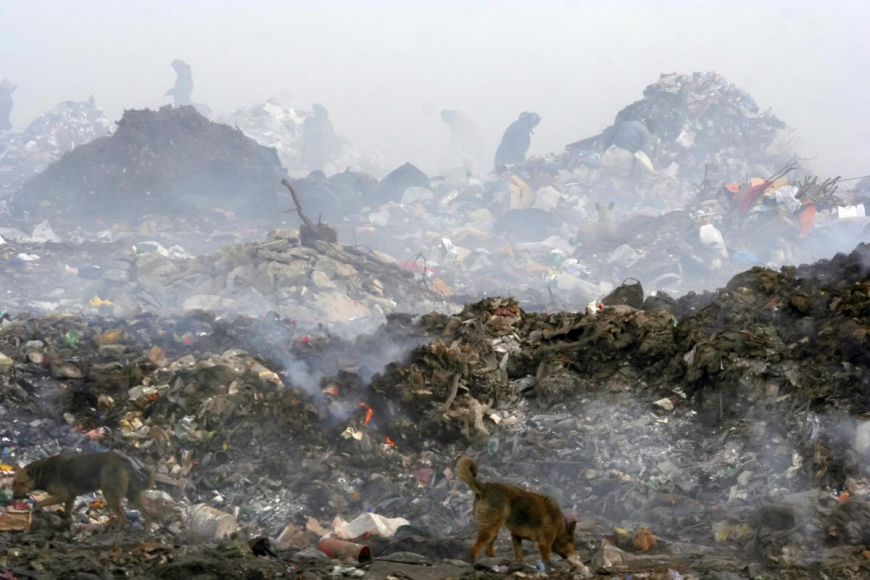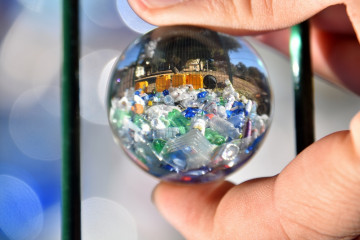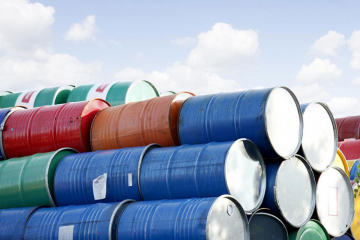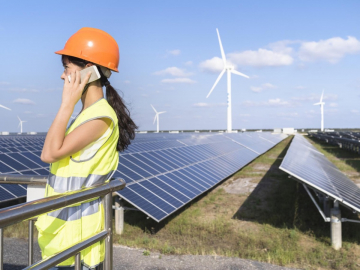These days, there’s a lot of incentive for businesses to operate in an eco-friendly and sustainable way. It really is a win-win: your business stays aligned with changing regulations, your reputation is strengthened, and your bottom line is improved.
For any company interested in long-term success, the motivation is there in spades. That said, setting unrealistic sustainability goals can lead to missed targets, decreased morale, and diminishing efforts.
With terms like “zero waste” flitting around the sustainability industry, it can sometimes feel like companies are up against unachievable expectations. To help you get a better understanding of the concept and start setting your own goals, we’re diving into the topic of “Zero Waste to Landfill” - what it means, why it’s important, and how you can get started.
What is Zero Waste to Landfill?
According to the Zero Waste International Alliance, Zero Waste is “the conservation of all resources by means of responsible production, consumption, reuse, and recovery of products, packaging, and materials without burning and with no discharges to land, water, or air that threaten the environment or human health.”
While the definition of Zero Waste to Landfill is not regulated and targets vary based on the situation, the generally accepted threshold is 90% of waste is diverted from the landfill. Methods of diverting waste can include reuse, recycling, compost, anaerobic digestion, and animal feed.
When considering methods for diverting waste, keep in mind the waste hierarchy outlined by the EPA. The hierarchy ranks the various waste management strategies from most to least environmentally preferred:
- Prevent
- Reuse
- Recycle
- Energy Recovery
- Disposal
Why Focus on Waste?
In short, it can lead to cost savings in material costs and disposal cost, looks favorable for your brand, and is a practical step toward a circular economy.
Financially speaking, using resources more efficiently and setting up systems to get more out of your materials naturally leads to cost savings. Also, note the fact that landfills are getting more expensive. As long as we are Earth-bound, land is a finite resource -- and the cost of dumping waste is expected to continue to grow. The rising price of disposal is just one of the reasons why businesses today are focusing on identifying alternative options.
In addition to cost pressures, consumers and the general public demand that companies be held accountable for pollutive practices, now more than ever. Among industrialized nations, the U.S. is one of the largest per capita generators of municipal solid waste. Customers are voting with their dollars, and they want to see companies take action to protect people and planet.
Because of this, more and more major retailers and brands committing to zero waste and circular economy goals. Implementing your own zero waste goals can be a competitive advantage. Companies like Target have set ambitious goals; even some cities have committed to zero waste goals.
So now you might be asking yourself, where do I even begin with a zero waste to landfill journey?
How Can Zero Waste to Landfill Be Achieved?
Success here really begins with understanding the definition of “waste.” Waste is actually a pretty hard concept to pin down in terms of the legal definition -- the UK government even offers a 70-page guideline on how to define it. Broadly speaking, waste is any substance your company intends to discard.
This is important to consider because achieving Zero Waste to Landfill requires getting familiar with data about your company’s waste by whittling down the broad concept of “waste” into something granular and quantifiable. That means getting a big-picture view of your different waste types, treatment methods, and output rates.
So, to put it simply, the first step is to calculate your baseline - do you know what percent of your waste is going to the landfill versus higher uses? From there you’ll need to identify your problematic waste streams and materials going to landfill. Once you have a complete picture of your waste situation you can start working out a plan to reduce the amount going to landfill.
There’s no one single way to solve the puzzle- but take note that not all alternate waste disposal methods are considered to be in alignment with zero-waste initiatives. Incineration is controversially included in this discussion, with critics citing the impacts of a significant release of emissions as reason enough to exclude it from consideration.
To help keep yourself from feeling overwhelmed by your zero-waste journey, get started with a few basic steps:
- Calculate your baseline and get an understanding of your current waste.
- Set clear, measurable goals.
- Start with low-hanging fruit – once you meet a few simple goals, use that momentum to achieve more ambitious goals.
- Engage employees – you'll be surprised how far clear procedures and signage on bins can go in reducing your waste!
Remember, zero waste to landfill doesn’t have to be all or nothing. Taking small steps today can help improve your environmental impact from where you were yesterday!
Are You Ready to Take a Step Toward Being Landfill-Free?
Antea Group has decades of experience in helping companies achieve sustainability goals, and we use that experience toward leveraging every possible efficiency in a company’s unique scenario. We also work with TRUE Zero Waste to complement our strategies with a holistic, whole-systems approach that can effectively modernize the way your facilities work, turning waste into additional income streams while significantly cutting down your eco-footprint. We can also support your efforts to pursue zero waste to landfill certification, including Green Circle Certified, NSF International, Underwriters Laboratory (UL), and the U.S. Zero Waste Business Council (USZWBC).
Reach out to us if you want to learn more about the practical roadmap for bringing your organization to a state of Zero Waste to Landfill.
Want more news and insights like this?
Sign up for our monthly e-newsletter, The New Leaf. Our goal is to keep you updated, educated and even a bit entertained as it relates to all things EHS and sustainability.
Get e-NewsletterHave any questions?
Contact us to discuss your environment, health, safety and sustainability needs today.








